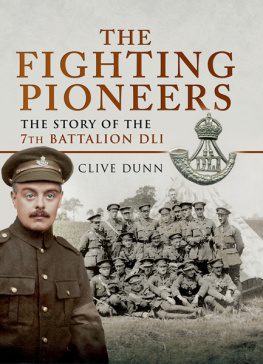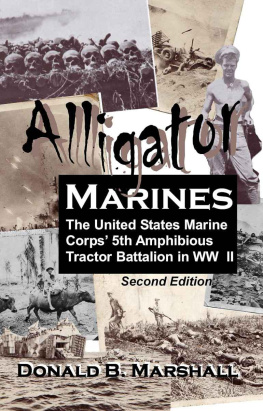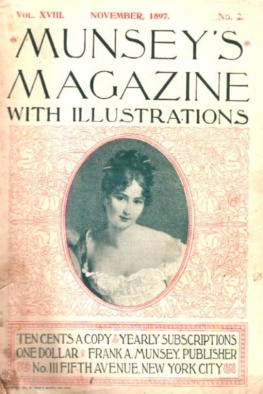This edition is published by PICKLE PARTNERS PUBLISHINGwww.picklepartnerspublishing.com
To join our mailing list for new titles or for issues with our books picklepublishing@gmail.com
Or on Facebook
Text originally published in 1944 under the same title.
Pickle Partners Publishing 2015, all rights reserved. No part of this publication may be reproduced, stored in a retrieval system or transmitted by any means, electrical, mechanical or otherwise without the written permission of the copyright holder.
Publishers Note
Although in most cases we have retained the Authors original spelling and grammar to authentically reproduce the work of the Author and the original intent of such material, some additional notes and clarifications have been added for the modern readers benefit.
We have also made every effort to include all maps and illustrations of the original edition the limitations of formatting do not allow of including larger maps, we will upload as many of these maps as possible.
CASSIDYS BATTALION
Published by History Section, European Theater of Operations
CASSIDYS BATTALION
It was the operation at UTAH BEACH which predetermined the location of DROP ZONE A and the mission of the airborne forces which dropped there shortly after midnight on 6 June. DROP ZONE A was the closest serviceable field to the Beach where elements of the 4th Infantry Division were landing shortly after dawn. The primary mission of the airborne was to assure the success of the seaborne forces.
Because of the nature of the ground, it was a varied assignment. The Norman coast at this point is flat and unimpressive. The only high ground near the Beach is an occasional sand dune mass. Stretching inland from the Beach for a thousand yards or more is a belt of salt marsh which would come under the wash of the sea when the tide is high were it not protected by the piled up sands. Dirt causeways topped by asphalt roads have been built across these marshes and provide the only means of convenient exit from the Beach to the firm ground westward of the marsh. This ground, too, is flat and is made difficult to the invader only because of its ubiquitous hedgerows. Since no high land interposes, guns sited along the fringe of this solid hedgerow country are in position to dominate the Beach and work ruin on ships nearing the shore. The chief threat to the UTAH BEACH landings was the German coastal battery located just to the westward of the village of ST MARTIN DE VARREVILLE. It had been the target of air bombardment in the preceding days but the results were not known. The fate of the northern half of the operation could have turned on it; the assured destruction of the Battery became a chief preoccupation of the 502d Airborne Infantry Regiment [i.e., 502d Parachute Infantry].
Coupled with that mission were other details, all assigned to smooth the passage of the 4th Infantry Division from the Beach to the firm ground. While making sure of the destruction of the Battery, the Regiment had also to deal with the artillery garrison which was quartered in barracks a few hundred yards west of the Guns a position identified in the American plan as W-X-Y-Z. One of the main exits from the Beach ran past the Battery and through the Barracks area. This was Exit No 4. Another such causeway Exit No. 3 was about 700 yards to the south. The Regiment was to seize and clear these causeways so that elements of the 8th and 22d Infantry Regiments could make an uninterrupted crossing of the marshes. These things done, the 502d was to engage the enemy to the northward and do its utmost to disperse his forces there so that the right flank of the 4th Division would be protected and its regiments would have a fair chance to collect themselves before launching the attack to expand the beachhead.
To one Battalion the First of 502d Regiment, commanded by LT COL PATRICK J. CASSIDY were allotted the missions of mopping up POSITION W-X-Y-Z, establishing the northern flank for the airborne force and making contact with 505th Regiment of the 82d Airborne Division on the left. Second Battalion was given the straight mission of destroying the coastal battery. Third Battalion was to back up this attack if required, and then capture the two strategic causeways. These two main tasks became quite simple in the doing; they provoked no special hazard and they were curiously devoid of any spectacular consequences. But out of the varying assignments given First Battalion developed what was perhaps the most sustained and vigorous action reported from any Battalion sector on D DAY.
The flight from England was more peaceful than they had expected. As the serial passed the islands of JERSEY and GUERNSEY, the men saw their first anti-aircraft fire, but it was distant and apparently aimed at some other formation. Tracer fire sprayed around them as they crossed the Normandy coast. There was a little flak. The formation moved on into a belt of light fog. {1} Again, it became quiet. Six minutes out from DROP ZONE A, the ground fire picked up again, though it was mainly the fire of machine guns. They could see a town below them, its buildings thrown into relief by the light of a fiercely burning building. CASSIDY took it to be STE MERE EGLISE and was relieved at the thought that the Alone was on its course. {2} From that point on the intermittent ground fire thickened and by the time the green light flashed the signal for the jump tracer bullets were producing a Roman candle effect all around the planes.
To CASSIDY, as he jumped, it looked as if three guns were trained directly on him, with their fire converging just above his head. He thought to himself that they must have been concentrating on the lead plane, and that was the way of it. The fire followed him about three-fourths of the way down; then other planes came over and the tracer fire lifted from the dropping men in search for the ships. He felt his feet hit on hard pavement even as he realized that his chute had become hung in a tree. There he lay for a few minutes at the corner of a road intersection. While he was trying to get clear of the chute, a machine gun opened fire toward him. He was certain that the enemy had seen his chute and had singled him out as a personal target though he later realized that they must have been zeroed-in on the crossroads. The bullets bounced off the pavement.
After much effort, he got a grenade loose but by that time more planes were coming over and the enemy gun was searching skyward. He broke free from the chute then and having noticed the line of flight of the planes, he figured he had his East-West direction. After he had crawled about 10 yards, the gun again fired toward him. So he lay still, waiting for more planes to come over and draw the guns attention. This expected relief soon materialized. While he had waited, he had seen other paratroopers jump from their planes a little to the westward. He made toward them, hugging the hedges and ditches. After he had crawled about 100 yards, he heard a horseman come at a tight gallop through the road intersection where he had been, and continue on. There were no other sounds of movement. He crept on along the hedgerow. Then mortar fire bracketed him about four rounds. More planes came over. The mortars ceased fire. It was another favorable opening and he moved on along.
Something stirred a few feet from him on the other side of the hedgerow. He couldnt be sure but he thought he heard a man moving. The sound seemed to be going away from him, in the opposite direction. He found a hole in the embankment and looked through. About 10 yards away, he could see the forms of two men, drawn in close to the hedge, and even in the darkness he could tell that their backs were turned toward him. So he snapped his cricket once. The two men went flat and did not reply. In that second, CASSIDY wondered what to do next. Then from close at hand a third man whom CASSIDY had not seen snapped a cricket and the suspense was lifted.










